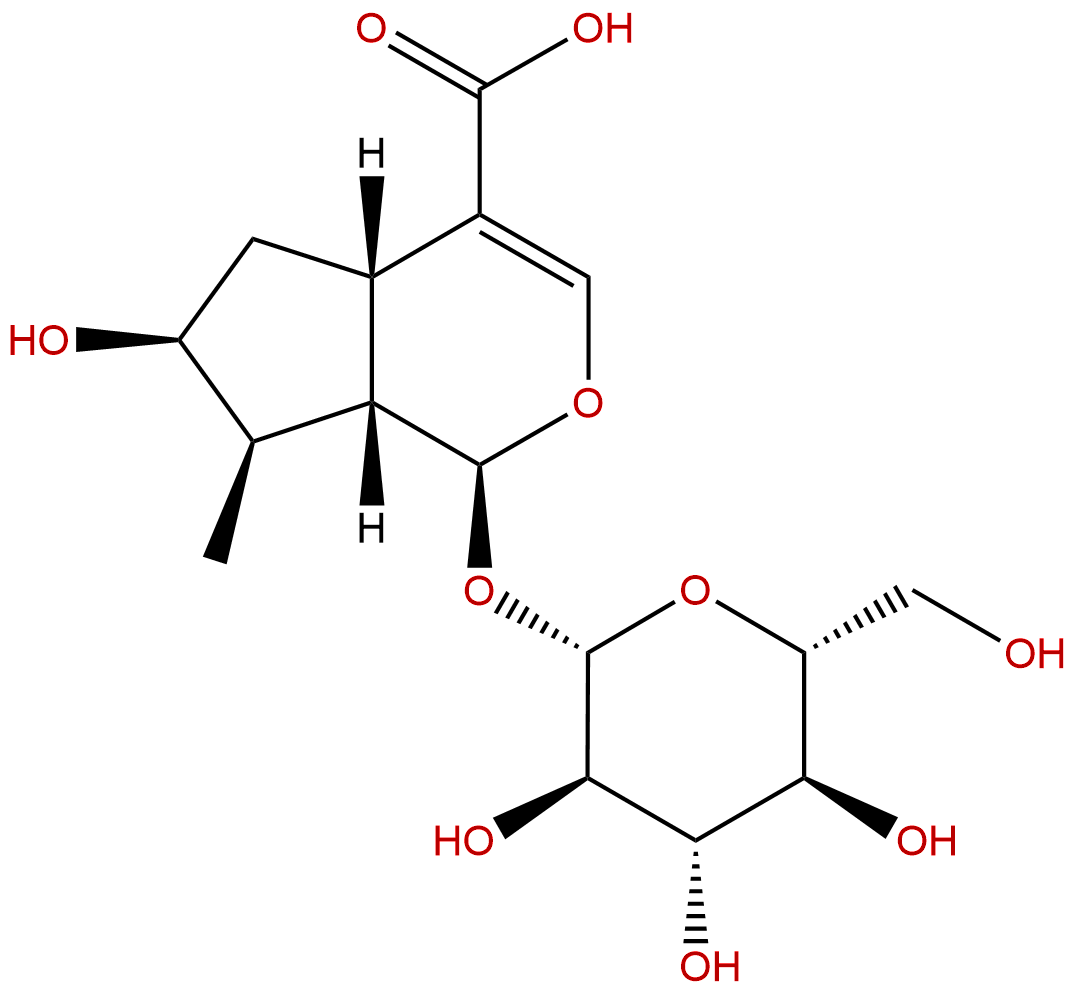
Loganic acidCAS No.:22255-40-9 |
||||||||||
 |
|
|
||||||||

| Catalogue No.: | BP0883 |
| Formula: | C16H24O10 |
| Mol Weight: | 376.358 |
| Botanical Source: | Gentianae macrophyllae radix |
Synonym name: Norloganin
Catalogue No.: BP0883
Cas No.: 22255-40-9
Formula: C16H24O10
Mol Weight: 376.358
Botanical Source: Swertia caroliniensis and Dipsacus asperoides
Purity: 95%~99%
Analysis Method: HPLC-DAD or/and HPLC-ELSD
Identification Method: Mass, NMR
Packing: Brown vial or HDPE plastic bottle
Can be supplied from milligrams to grams.
For Reference Standard and R&D, Not for Human Use Directly.
Inquire for bulk scale.
Description:
Loganic acid( 0.7% solution) has a strong intraocular pressure (IOP)-hypotensive effect, it exhibits both sides effect on superoxide generation. Loganic acid also has protective effects on atherosclerosis risk factors in hypercholesterolemic rabbits, it shows significant anti-inflammatory effects decreasing TNF-α and IL-6 activity in serum.
References:
Nat Prod Res. 2013;27(10):911-5.
Anti-inflammatory effect of three iridoids in human neutrophils.
To verify the anti-inflammatory potency of iridoids, three iridoids (two natural, Loganic acid: LA; geniposide: GE; and an artefact, 7(S)-n-butyl morroniside: BM) were investigated in vitro on the inhibition of superoxide generation in human neutrophils.
METHODS AND RESULTS:
All compounds showed inhibitory effect on fMLP-induced superoxide generation in a concentration-dependent manner with the following order: BM>LA>GE. BM exhibits potent inhibitory activity on superoxide anion induced by PMA, while LA and GE showed weak effect. When AA was used as stimulus, the generation of superoxide anion was suppressed by BM in a concentration-dependent manner.
CONCLUSIONS:
LA and GE exhibit both sides effect on superoxide generation.
Phytomedicine. 2014 Nov 15;21(13):1774-84.
The protective effect of the Cornus mas fruits (cornelian cherry) on hypertriglyceridemia and atherosclerosis through PPARα activation in hypercholesterolemic rabbits.
Cornelian cherry (Cornus mas L.) fruits have been used in traditional cuisine and in folk medicine in various countries. This study was conducted to evaluate the constituents and impact of cornelian cherry (C. mas L.) fruits lyophilisate on lipid levels, PPARα protein expression, atheromatous changes in the aorta, oxido-redox state, and proinflammatory cytokines in hypercholesterolemic rabbits.
METHODS AND RESULTS:
The HPLC-MS method was used for determining active constituents in cornelian cherry. In a subsequent in vivo study the protective effect of the cornelian cherry on diet-induced hyperlipidemia was studied using a rabbit model fed 1% cholesterol. Cornelian cherry (100mg/kg b.w.) or simvastatin (5mg/kg b.w.) were administered orally for 60 days. Two iridoids - Loganic acid and cornuside - and five anthocyanins were identified as the main constituents of the cornelian cherry. The administering of the cornelian cherry led to a 44% significant decrease in serum triglyceride levels, as well as prevented development of atheromatous changes in the thoracic aorta. Cornelian cherry significantly increased PPARα protein expression in the liver, indicating that its hypolipidemic effect may stem from enhanced fatty acid catabolism. Simvastatin treatment did not affect PPAR-α expression. Moreover, the cornelian cherry had a significant protective effect on diet-induced oxidative stress in the liver, as well as restored upregulated proinflammatory cytokines serum levels.
CONCLUSIONS:
In conclusion, we have shown Loganic acid to be the main iridoid constituent in the European cultivar of the cornelian cherry, and proven that the cornelian cherry could have protective effects on diet-induced hypertriglicerydemia and atherosclerosis through enhanced PPARα protein expression and via regulating oxidative stress and inflammation.